Video Game Sound Design – An Expert Speaks
Jason Graves has created unique soundtracks and sound effects for many high-profile video games, from Dead Space to Far Cry Primal. MusicTech meets one of the most in-demand video-game composers in the world… Jason Graves has become one of the most successful game composers in recent years, having composed for some big name releases including […]
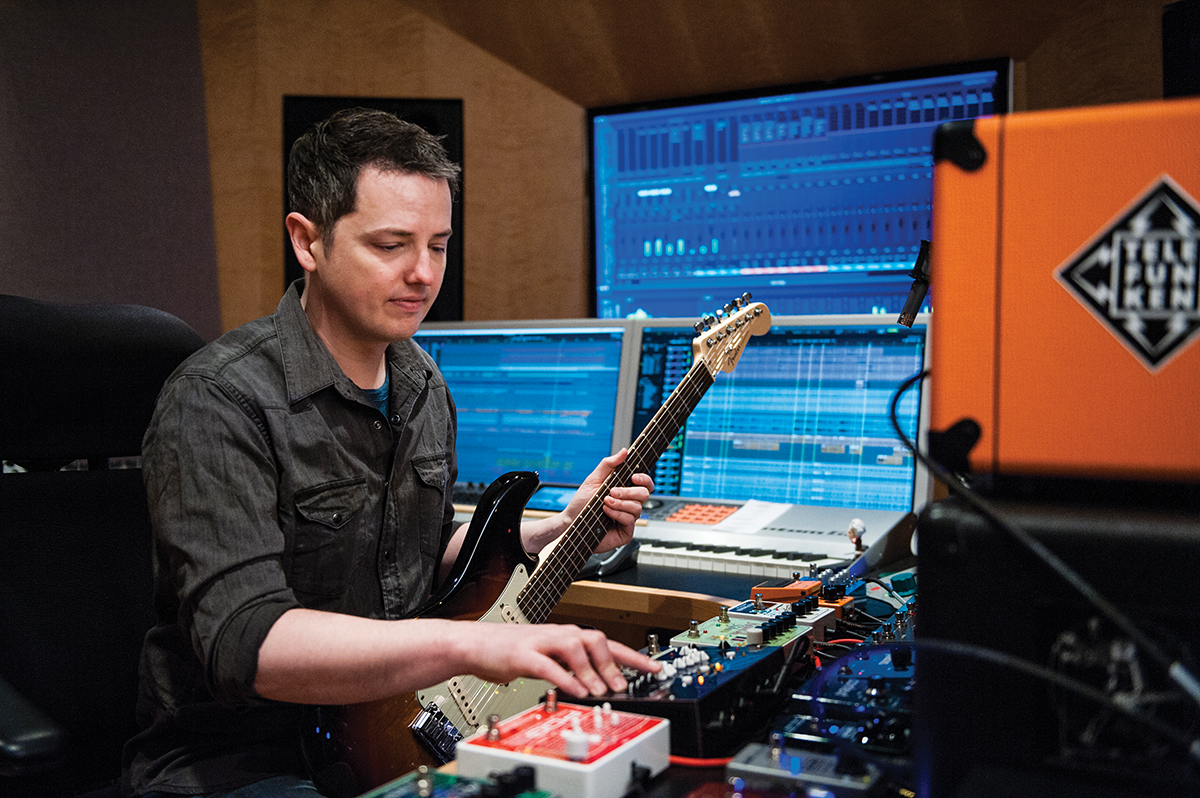
Jason Graves has created unique soundtracks and sound effects for many high-profile video games, from Dead Space to Far Cry Primal. MusicTech meets one of the most in-demand video-game composers in the world…

Jason Graves has become one of the most successful game composers in recent years, having composed for some big name releases including Until Dawn, Evolve, The Order: 1886, Dead Space and the reboot of Tomb Raider.
Jason’s background in percussion lent itself perfectly to recent release, Far Cry Primal where he was called in to create a soundtrack with plenty of ritualistic percussion and also sound effects from the game’s Stone Age environment, including bushes, bones, antlers, clay pots and wooden artifacts.
With such a diverse background, Jason not only composes for games but creates his own music where he plays drums, percussion and guitar. But it’s the 100-plus soundtracks he’s worked on that have led him to record and compose in some of the world’s top studios, including Abbey Road, Air, Capitol Records, Fox, Paramount Pictures and Skywalker Sound. We found out more about composing for such a diverse range of genres and soundtracks…
MusicTech: Hi Jason, tell us a little about how you got into making music?
Jason Graves: I like to explain my career as a result of my parents never telling me I had to get a real job! I’ve always loved music, from a very young age, and started obsessing over playing instruments in middle school – piano, drums, handbells and a little Casio keyboard I got for Christmas in seventh grade.
That Casio was really the beginning. So many sounds and drum beats!
My addiction continued through high school – private lessons for snare drum, mallets, timpani and piano and a bolstering of my composition ideas through my band director. He was basically the icing on the cake for me: a very fun and inspirational teacher. I’ve had the pleasure of taking him to several of my recording sessions at Skywalker and Abbey Road. Talk about some full-circle moments!
My college and postgraduate career had an emphasis on music for film and television. I worked in Los Angeles for a time on commercials, trailers and ghost writing for films, but never really found it very inspirational. There was plenty of ‘copy this track’ and ‘just make it sound like this latest film’.
It wasn’t until I made a contact in the game industry that I had my first creatively satisfying gig. I went from spending, quite literally, three months on a single 30-second advert to having six weeks to compose 45 minutes of orchestral music with complete creative freedom. Needless to say, I was hooked after that!
MT: What do you think you are known for – do you have a signature sound?
JG: I don’t know if it’s a really a ‘trademark’ per se, but I firmly believe in using as many live musicians as possible. A unique twist on that is the fact that I’m often playing on most of my scores, unless it’s a live orchestra.
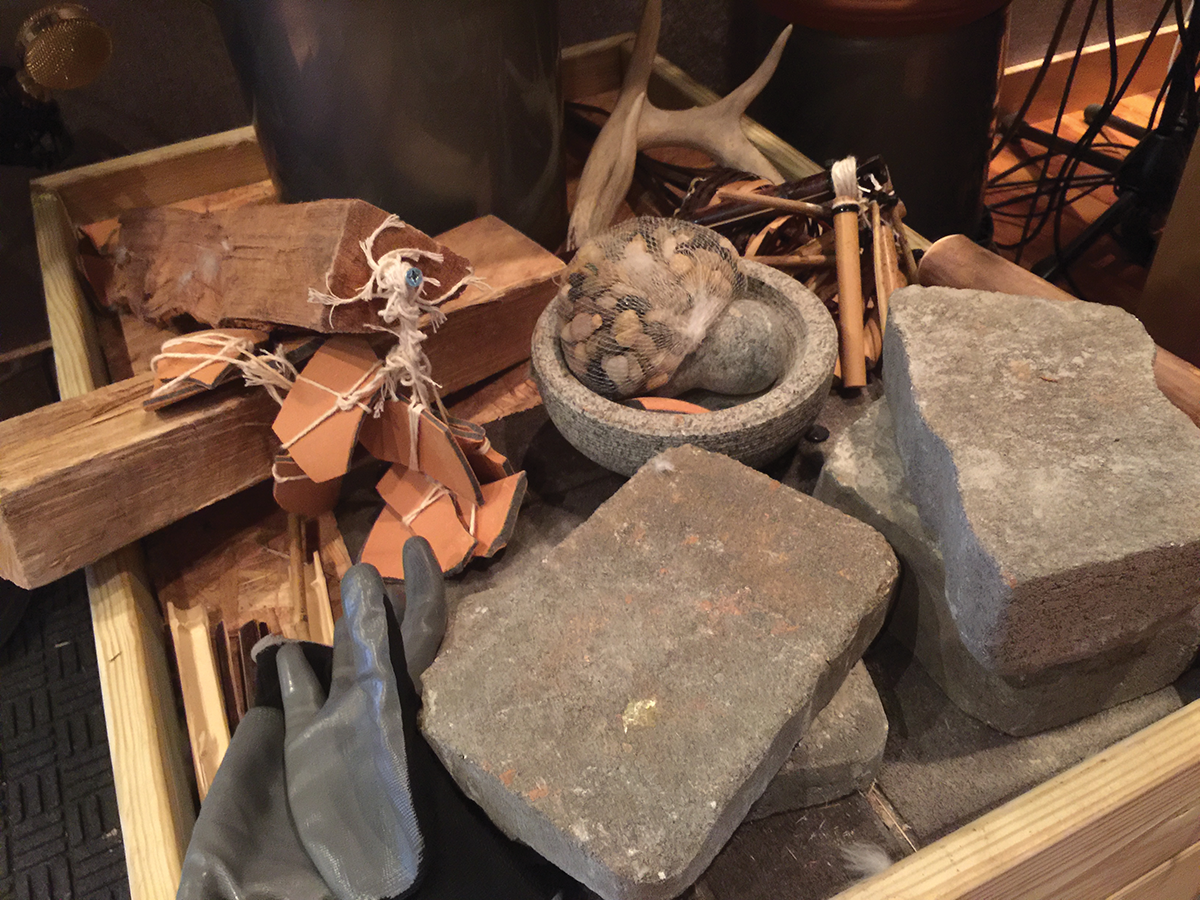
In Far Cry Primal, every element went into Jason’s soundtrack
Even then, I’m still contributing all the live percussion and mixing everything back in my studio. I suppose, to a certain extent, I’m a bit of a one-man army, meaning I can arrange, perform, record, edit, mix, master and deliver a large portion of my music without the need for any outside assistance, especially in the form of needing to hire studio and performers to track solo instruments. I simply do it all at my place.
Some recent examples would be Far Cry Primal and Farlands for Oculus Rift – both performed and recorded completely in-house. Until Dawn had a live orchestra that made up half the score which I conducted at Ocean Way Studios (Nashville) and subsequently edited and mixed back home. The other half of the score was more experimental recordings I did myself.
MT: How does game-music composition differ from working for other media like TV and film?
JG: The music is interactive. Yes, we’ve all heard about that by now, but it is truly a major difference – especially with larger games with more music and many more musical opportunities to support the gameplay through an adaptive score.
But a big one for me that many composers don’t seem to talk about is the sheer amount of music that has to be written. Some of these game have five or more hours of cinematics alone. Even if only half of those need original music, the total amount is already more than any feature film, and we haven’t even considered the actual gameplay yet.

Jason uses everything from shakers to…jaws. Of course he does!
An adaptive score for a large game can easily run past the 200-minute mark, not including cinematics, and all that adaptive music needs to be granularly exported and delivered in an extremely precise fashion. There’s definitely no ‘bounce the stereo track and be done with it’.
There’s usually a fairly painful export process required for each piece, which means you either have someone else to assist you in deliveries, or you’re spending a few hours each night clicking keys every three minutes when you should be inside relaxing.
MT: Sounds quite stressful, so how does technology help?
JG: Of course, there are third-party applications like Wwise [an interactive sound engine with effects and plug-ins that works on several gaming platforms] that assists with absolutely stunning music integration. It’s just a matter of learning the interface, which is a bit more on the engineering side than the creative one, but it gets the job done quite well.
There’s a new program called ELIAS that functions as a bridge between the composer and Wwise (or FMOD, if that’s your bag) and it’s a much more musical ‘for the composer’ kind of interface. But I intentionally switched to Cubase for Far Cry because of its batch-exporting features. Probably 90 per cent of my export needs are fulfilled that way, which is an amazing timesaver.
Another great fact is programmes like Wwise and ELIAS are free for composers to download and try out. Licensing fees apply once they are used in a game. And even then, the game developer is the one that pays for the usage. What a great way to dive in and experience programming interactive music for yourself…
MT: Do you think you have a signature soundtrack ‘sound’?
JG: Our biggest challenge as composers of any medium is to trying to stand out. There is simply so much music out there and so many people vying for the same jobs. How do you make yourself recognisable and unique? My methodology over the years has been to eschew as much of a ‘commercial’ sound as possible.
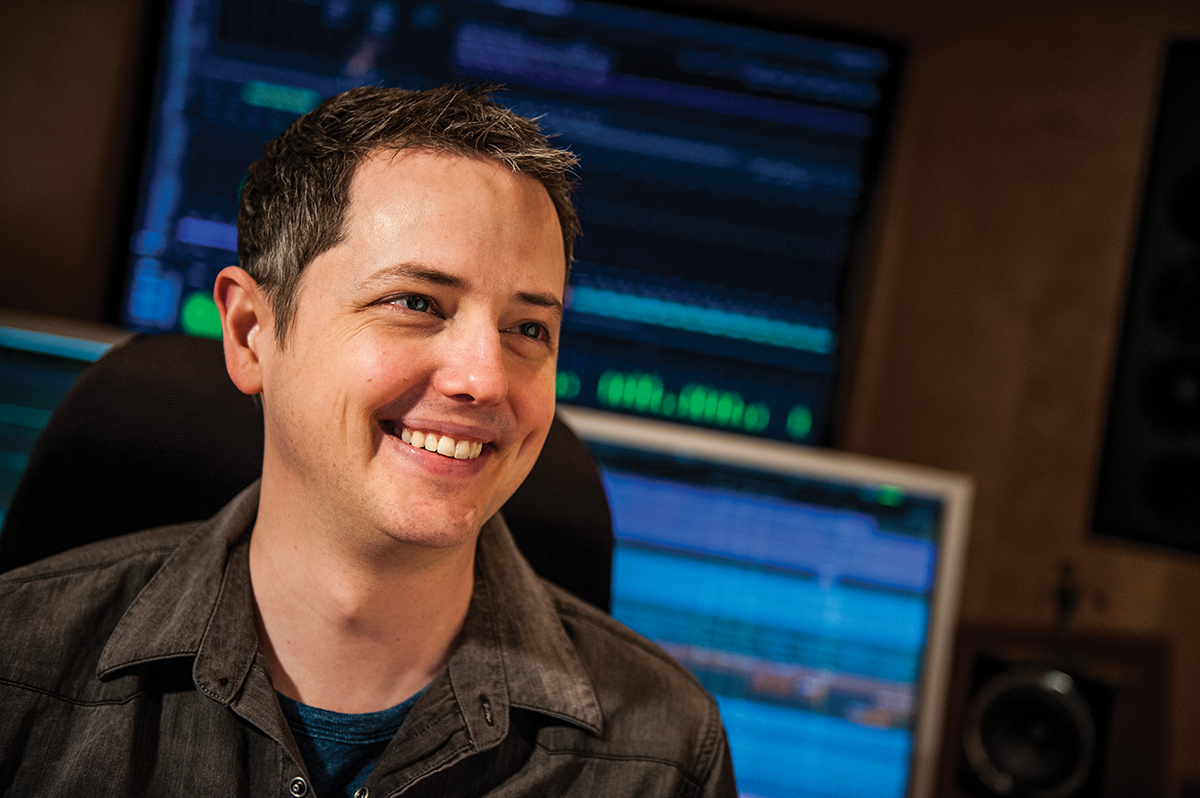
My first thoughts on any project are focused on ‘what sounds can I NOT use?’ If it’s a live orchestra score, what instruments can I omit? How far can I push leaving out sections of the orchestra until it’s almost too constricting?
If it’s something I’m doing in my studio, how far from the ‘expected’ sound that everyone has heard can I get before the developer starts to pull me back?
As it turns out, I’ve yet to push the limitations of the developer’s creative sensibilities. It seems the more I push for new sounds, new directions and new techniques, the happier they are with the score.
So I guess my short answer would be, my ‘sound’ is the end result of trying to never repeat myself and keep trying new things. Hopefully, that means that the sound of Far Cry Primal is fairly different from Dead Space, and that Until Dawn has a completely separate musical language from Devil May Cry or Tomb Raider.
MT: The role of game composer seems to be a many and varied one; how do you define it?
JG: It helps me to think of it as simply as possible. The composer’s job is to enhance and elevate the emotional experience of the player. Whenever I feel like I’m losing focus or deviating from what felt like is the proper musical path, I go back to that original thought. It helps me stay focused and do the best job I can.
MT: So how does a typical project – if there is one – come together in terms of time, operation, music to visuals etc?
JG: Every job is definitely its own experience, and I mean that in the best way possible. Each game is truly unique and my end goal is to envision and create a musical score that is equally unique. Ideally, I’m brought in fairly early and can get a great feel for the project as it grows and develops. The longer I have with the world the developer has created, the more comfortable and natural I feel ‘existing’ in it and, by extension, composing for it.
Most projects have a multiple year production cycle and I’m right there with them, along for the ride. I have had shorter timelines, but overall, the general procedure remains the same – sharing as much about the game with me as possible, open discussions about the purpose and reason behind the music and very active communication with the sound team on every other aspect of the audio as well. That last point can make a huge difference in what I decide to do for the music.
MT: And how about a typical track within the project – how does one start and evolve?
JG: It varies from project to project and it all really comes down to the focus of each soundtrack. With something like Tomb Raider, which needed a completely new theme, I began with working out the theme on a simple piano. Everything else sprang from the theme. For Dead Space, it was all about experimental, live sounds.

We love those Moog effect pedals – the ones sitting next to the skull…
I started by sketching things on paper, which led to a recording session and sound editing: then I began the composition process. All the music was quite literally based on the sounds I had recorded.
One of my latest projects, Far Cry Primal, was a very rhythmic score with plenty of experimental percussion sounds. It takes place in prehistoric times, so I started with rocks, twigs, dirt and bone and put together the foundation of the entire score.
I wanted it to feel grounded in the world you were exploring, almost as if you could come around a corner and see a group of prehistoric musicians sitting around a fire playing the music.
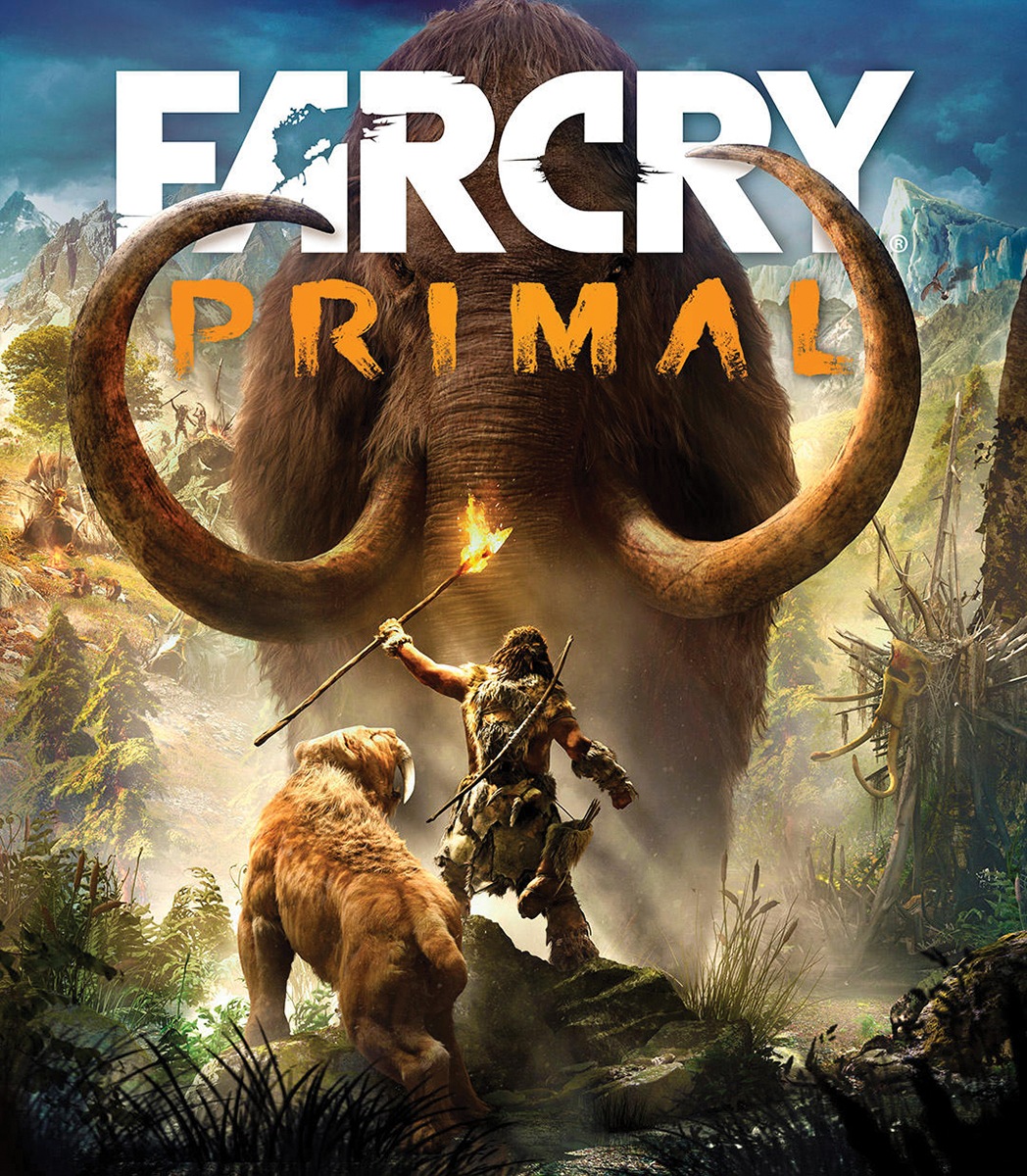
Of course there were sound experiments aplenty, especially considering the unique time in which Primal takes place. In the beginning, it was simply about honing a ‘sound’ for the score. I knew I didn’t want to have any modern material involved as far as instruments and sound sources were concerned – no plastic, metal or any kind of current technology.
I focused on skin, bone, wood, clay, stone and even dirt – it seemed like a simple but very challenging way to immediately set a unique musical tone for the game.
In fact, about a third of the score doesn’t have any actual instruments in it at all. The music for the Udam tribe, one of the enemy tribes you fight against, was created entirely from found objects that could have existed back then.
Large pieces of wood, stones, bamboo, clay pots, dirt, gravel and three different kinds of shrubbery were all put through their paces and eventually broken, worn out or simply died as a result of our massively enthusiastic banging and striking.
Record yourself to create character…
MT: You talk about having to be different to stand out. How can MusicTech readers take that advice and run with it?
JG: The first thing that comes to mind is recording myself playing as much as possible and the outboard front end I use. I like this approach, because it’s easily scalable for anyone, regardless of budget or instrument. Anything from a simple shaker to your personal instrument, bowing or tapping things, or recording your friends at work, to add that special something that no one else has, quite literally!
The other half of this technique involves the hardware which is also scalable by budget. I prefer to use ribbon or tube mics along with some subtle compression when I’m tracking live. Modern mics, especially the cheaper condensers, are incredibly bright.
The tubes and ribbons go a long way to helping the instrument sit in the mix. Same thing for compression – just another touch of something going in that means I have to focus less on getting the sound to fit later on.
Favourites, Favourites
MT: Which projects are you most proud of and why?
JG: I still love Dead Space 2 – that project was such fun to work on with the folks at EA. Getting to come back and revisit something that we had spent so much time working on as a team was a real treat.
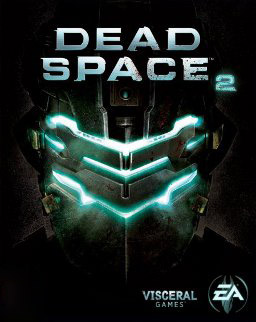
I’ll also always have a special place in my heart for the score to The Order: 1886. It was a personal highlight, both creatively and technically, as Sony literally let me do anything I wanted to with the score which included all kinds of unique orchestration techniques
(24 violas and 12 celli!) and two weeks recording at Abbey Road. The music team at Sony was absolutely stunning and I had such amazing support through the whole score. I’m really proud of the final result.
MT: Which soundtracks do you admire by other composers and why?
JG: Recent scores that come to mind are Everyone Has Gone To The Rapture, Bioshock Infinite and Hohokum. It’s no coincidence that those scores are also from some of my favourite people in games that I’m privileged to call friends.
We are a small but mighty bunch in game audio and many of us have known each other for years, so there’s always some personal motivation behind listening to work other than our own.
The Gear
MT: What are your favourite sound-generating studio tools?
JG: My go-to sounds are the ones I can make and record myself. I love the idea of being the creator of the sound and recording it live, with all its imperfections and glory. Many times, I feel like looking around the computer for sounds other people have already created is a little pointless – my ultimate goal is to be as unique as possible, so why would I start with sounds everyone else has access to? Of course, a lot can be done to make those sounds your own, and that’s definitely another avenue of exploration I enjoy.
Beyond recording new sounds, I’m definitely a fan of drums, percussion and guitars. I’ve got a collection of electric and acoustic guitars, plus a literal desktop full of guitar pedals, amps and cabinets.
Anything goes with that pedalboard! Many times, I’m re-amping other sounds through it as well, not just guitars.
I’ve got a handful of outboard analogue synths, including Moogs and an Arturia MiniBrute, which get used and abused all the time.
Inside the computer, I pretty much default to u-he synths – and every sound The Unfinished has programmed for them. Matt Bowdler is the man behind the patch creations and I hire him for custom sounds on every new project. He’s brilliant at it and anyone using software synths should check him out – he programs sounds for all the major VSTs.
MT: What about outboard? What do you find most creative and most useful?
JG: I record through outboard EQ and compressors – I have six different analogue signal chains I can choose from, including different preamps, EQs and compressors. EQs from API and Manley and the compressors I track with are Distressors, API and BAE. I’ve found that analogue makes things sound better and using it is so much easier than digital, especially when recording into the computer.
Most of the time, I just need a touch of ’verb and the sounds sit perfectly in the mix, so there’s also the added benefit of saving CPU power.
For plug-ins, I have three go-to companies: FabFilter, Soundtoys and UAD, hands-down the three best-sounding and most versatile folks out there. FabFilter has amazingly transparent sound and the best UI in the business.
Soundtoys are the most creative and incredible-sounding effects anyone could ask for. And UAD… where to even begin with UAD? But if you’re looking for that ‘analogue makes it easy to sound amazing’ sound, but without the hefty price tag of hardware, UAD is where you shop. I have many of the hardware units that their products emulate and I literally cannot tell the difference in the sound.
MT: Tell us what you’ve got planned for the near future?
JG: Plenty of amazing and exciting projects that, alas, I am sworn to secrecy for. But they are all definitely very different from each other and have almost endless possibilities of sonic exploration. I wouldn’t have it any other way!